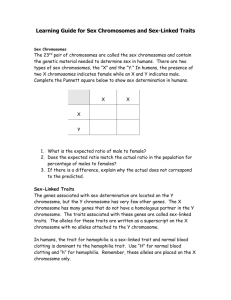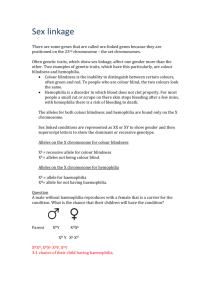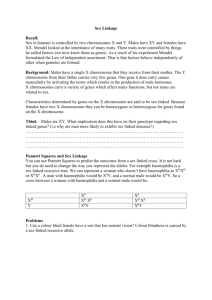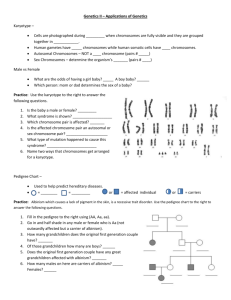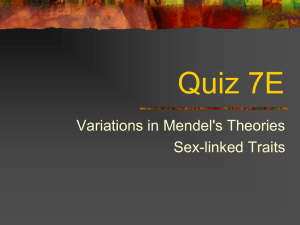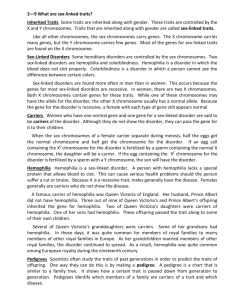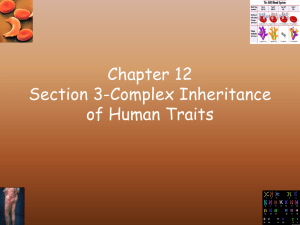File - The Obsolete Teacher
advertisement
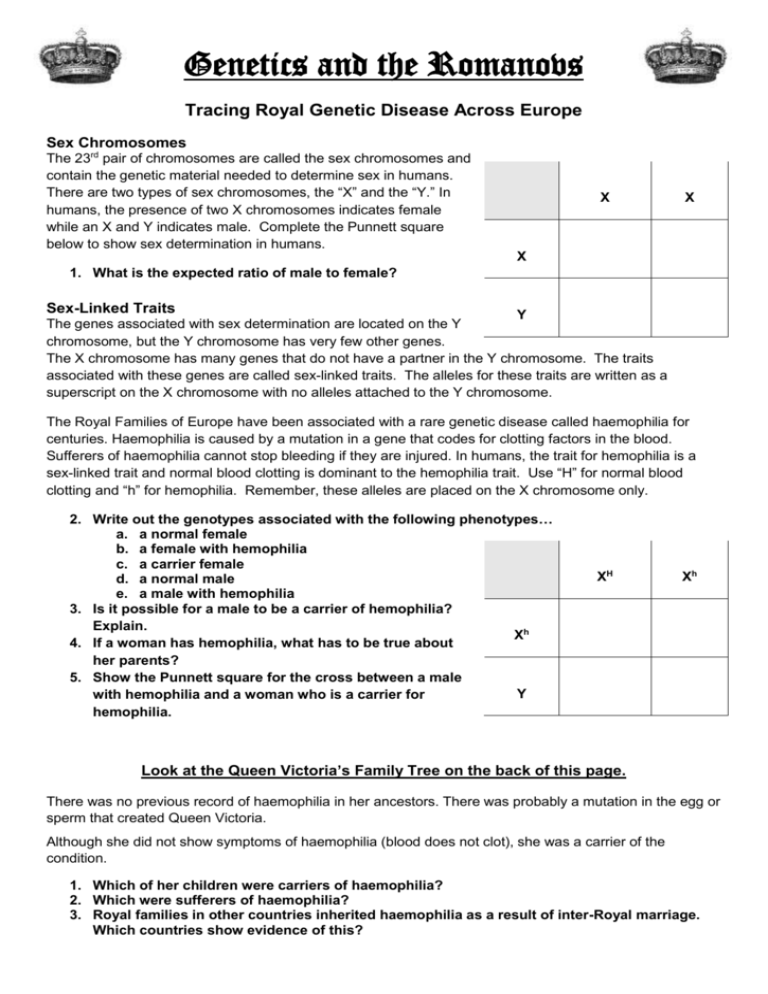
Genetics and the Romanovs Tracing Royal Genetic Disease Across Europe Sex Chromosomes The 23rd pair of chromosomes are called the sex chromosomes and contain the genetic material needed to determine sex in humans. There are two types of sex chromosomes, the “X” and the “Y.” In humans, the presence of two X chromosomes indicates female while an X and Y indicates male. Complete the Punnett square below to show sex determination in humans. X X X 1. What is the expected ratio of male to female? Sex-Linked Traits Y The genes associated with sex determination are located on the Y chromosome, but the Y chromosome has very few other genes. The X chromosome has many genes that do not have a partner in the Y chromosome. The traits associated with these genes are called sex-linked traits. The alleles for these traits are written as a superscript on the X chromosome with no alleles attached to the Y chromosome. The Royal Families of Europe have been associated with a rare genetic disease called haemophilia for centuries. Haemophilia is caused by a mutation in a gene that codes for clotting factors in the blood. Sufferers of haemophilia cannot stop bleeding if they are injured. In humans, the trait for hemophilia is a sex-linked trait and normal blood clotting is dominant to the hemophilia trait. Use “H” for normal blood clotting and “h” for hemophilia. Remember, these alleles are placed on the X chromosome only. 2. Write out the genotypes associated with the following phenotypes… a. a normal female b. a female with hemophilia c. a carrier female d. a normal male e. a male with hemophilia 3. Is it possible for a male to be a carrier of hemophilia? Explain. Xh 4. If a woman has hemophilia, what has to be true about her parents? 5. Show the Punnett square for the cross between a male Y with hemophilia and a woman who is a carrier for hemophilia. XH Xh Look at the Queen Victoria’s Family Tree on the back of this page. There was no previous record of haemophilia in her ancestors. There was probably a mutation in the egg or sperm that created Queen Victoria. Although she did not show symptoms of haemophilia (blood does not clot), she was a carrier of the condition. 1. Which of her children were carriers of haemophilia? 2. Which were sufferers of haemophilia? 3. Royal families in other countries inherited haemophilia as a result of inter-Royal marriage. Which countries show evidence of this? Queen Victoria’s Family Tree Males are shown as squares, females as circles
